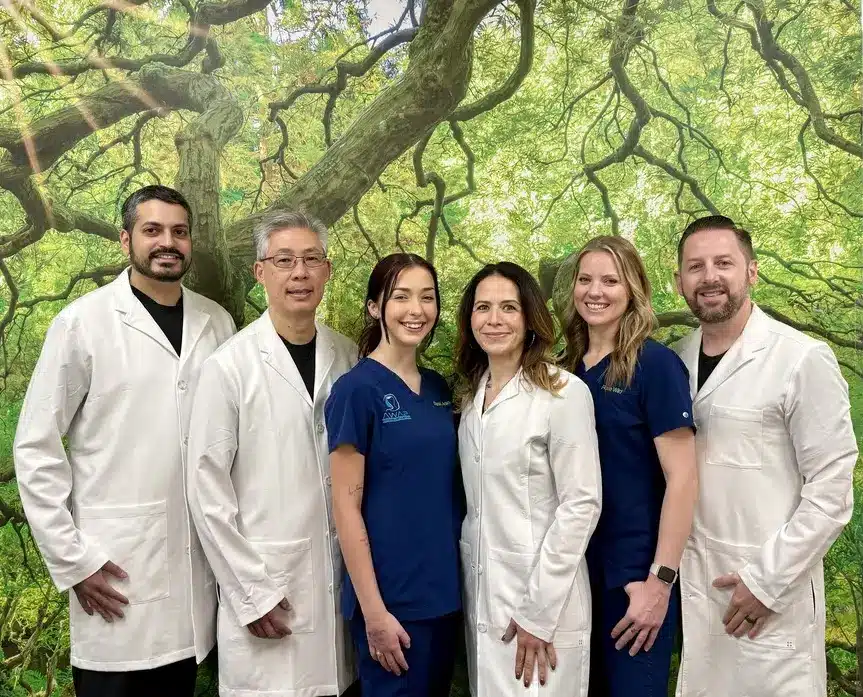
Ketamine for Chronic Pain Treatment
Chronic pain is more than physical, it’s mentally and emotionally draining, especially when treatments fail to provide lasting relief. You’ve tried medications, injections, physical therapy, maybe even surgery, yet the pain persists. That’s where ketamine therapy changes the game.
At Scottsdale Ketamine Therapy Clinic, we offer a science-backed, physician-led approach that targets pain at its source. Unlike conventional treatments that only mask symptoms, ketamine rewires the way your brain and nervous system process pain, offering real, long-term relief.
We specialize in treating central, neuropathic, and inflammatory pain conditions, not just structural issues like herniated discs. If you’ve been told there are no more options, ketamine therapy could be the breakthrough you’ve been waiting for. Relief is possible.
What Is Chronic Pain?
Chronic pain isn’t just “pain that lasts a long time.” It’s pain that persists beyond the normal healing process, lasting months, years, or even a lifetime. It can be constant or intermittent, mild or excruciating, localized or widespread. What makes it truly devastating is that it rewires the nervous system, creating a never-ending feedback loop where the brain misfires and amplifies pain signals—even when there’s no ongoing injury.
Some types of pain respond to conventional treatments like surgery or injections, but others are much more complex. This is where ketamine offers a breakthrough, especially for conditions rooted in nerve dysfunction, central sensitization, and hyperactive pain pathways.
Chronic Pain Conditions
Ketamine isn’t a universal fix for every pain condition. It won’t magically repair a torn ligament or stop a bulging disc from pressing on a nerve. But for neuropathic and centrally mediated pain conditions, ketamine is a game-changer. These conditions involve misfiring nerve signals, where the body keeps feeling pain long after the original cause is gone.
Here’s what ketamine can help treat:
- Complex Regional Pain Syndrome (CRPS): A brutal condition where minor injuries or surgeries cause the nervous system to spiral out of control, creating relentless, burning pain that spreads beyond the original injury site.
- Neuropathy: Whether from diabetes, chemotherapy, or unknown causes, neuropathic pain feels like electrical shocks, stabbing, tingling, or numbness in the hands, feet, or throughout the body.
- Chronic Migraines & Refractory Headaches: When traditional medications fail, ketamine can help reset the brain’s pain-processing centers, reducing both frequency and severity.
- Fibromyalgia: A disorder of central sensitization, where the nervous system is stuck in overdrive, making even mild pressure feel excruciating.
- Postherpetic Neuralgia (Shingles Pain): Even after the shingles rash disappears, nerve pain can linger for months or years.
- Phantom Limb Pain: The brain struggles to adjust after limb loss, continuing to send pain signals from a body part that no longer exists.
For these conditions, traditional treatments often fail to break the cycle because they don’t address the neurological roots of the pain. That’s where ketamine comes in.
Facts About Chronic Pain
- Your brain can “remember” pain. Once chronic pain sets in, it becomes deeply embedded in neural pathways. This is why injuries that healed long ago can still hurt years later.
- Traditional painkillers aren’t built for chronic pain. Opioids mask pain but don’t fix the underlying problem. NSAIDs (like ibuprofen) are great for inflammation, but they won’t touch nerve pain.
- Chronic pain changes your brain. Over time, the nervous system amplifies pain signals, making even small discomforts feel unbearable. This is called central sensitization, and it’s one reason why ketamine is so effective—it helps reverse this process.
- You’re not imagining it. Many people with chronic pain are dismissed, told they’re overreacting, or pushed into antidepressants. The reality? Pain is real, even if it isn’t visible on an MRI or blood test.
- Ketamine works when other treatments fail. Many of our patients come to us after years of frustration, having tried everything from physical therapy to invasive procedures. They’re shocked when ketamine provides relief they never thought possible.
Final Thoughts
Chronic pain has a way of shrinking your world—forcing you to cancel plans, abandon hobbies, and withdraw from life. It’s isolating, exhausting, and deeply unfair. If you’re tired of trying treatments that barely scratch the surface, it’s time to look at something different.
Ketamine is more than just another pain management tool—it’s a breakthrough therapy with the potential to reset how your nervous system processes pain. At Gilbert-Chandler Ketamine Therapy Clinic and Scottsdale Ketamine Therapy Clinic, we’re committed to helping you reclaim your life.
BOOK AN APPOINTMENT
We provide complimentary consultation on a phone call. One of our experienced doctors will discuss your concerns and provide guidance.
Call us on 480-253-9710 (Scottsdale) or 480-256-9322 (Gilbert), or fill the form below to receive a call back
